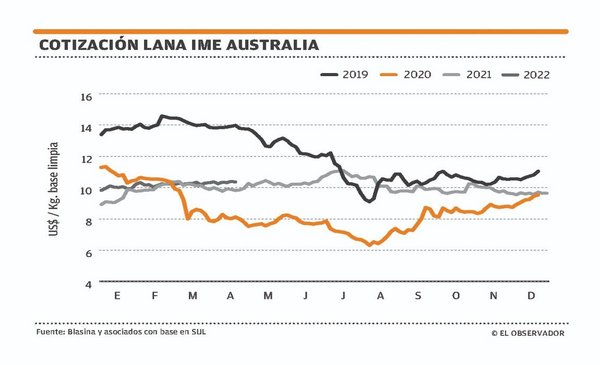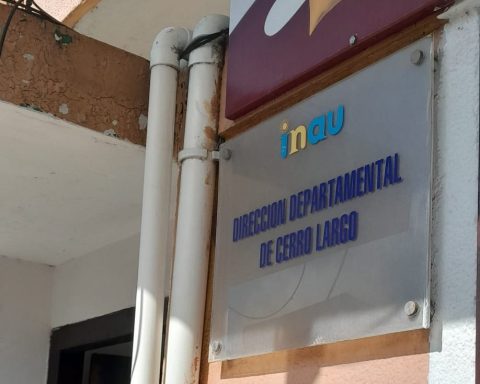The closure of China to wool imports from South Africa –due to a confirmed outbreak of foot-and-mouth disease in that country– altered the international market at the beginning of the week. In conjunction with the strengthening of the Australian dollar, led the Eastern Markets Indicator (IME) to its highest value since August, with US$10.40 per clean base kilo.
The increase was greater for wool from 17 to 21 microns, which gained up to 1.6%.
This 0.8% increase in the IME was not repeated on the second trading day, with the indicator losing four cents to close the week at US$10.36. This is an improvement of 0.4% from the previous week.
Wool business from Uruguay continues to be punctual and of low volumewhile the international market remains unstable, although with a slight upward trend.
In fact, the Australian behavior has been repeating the trend of increasing at the beginning of the week to retract in the following days, maintaining a portion of the gains. The demand retracted and almost 15% of the offer presented remained unsold.
This week, 28-micron wool increased 0.7% on the first day, to US$2.92 per clean base kilo, and maintained that value while finer wool fell. This category pays US$1.20 per dirty base kilo in Uruguay and US$1.60 with certifications.
The temporary interruption of the supply of wool from South Africa to China – destination of some 40,000 tons per year, 80% of the country’s production – transferred some buying pressure to Australia, according to Australian Wool Innovation (AWI).
“Robust biosecurity protocols and risk mitigation measures in that country should allow a quick return to normal trade,” estimated the Australian consultant, although in 2019, when the last outbreak of foot-and-mouth disease in South Africa, the interruption lasted eight months, it pushed up international prices slightly and had a big impact on the South African industry.
john samuel
Encouraging changes in the wool market, at least with partial improvements.


















